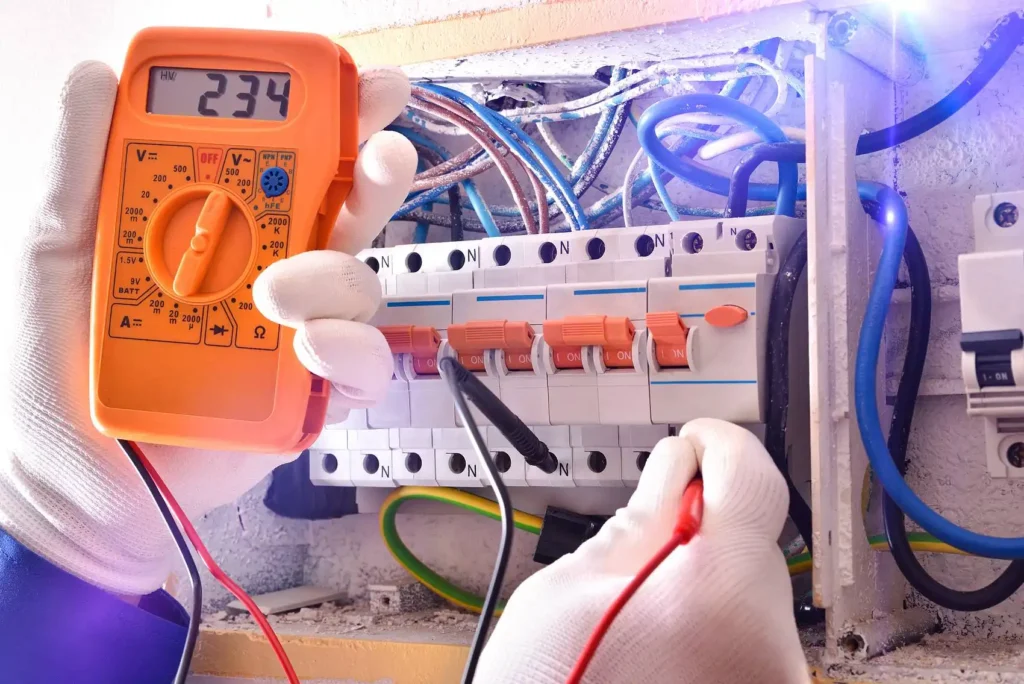Circuit breaker is an indispensable protective equipment in the power system, but long-term use or improper operation will lead to its performance degradation or even damage. This article will introduce the common symptoms of circuit breaker damage, diagnostic methods and countermeasures, in order to help users quickly identify the fault and take measures to ensure the safety of electricity.
1.Circuit breaker won’t close (manual or electric)
Phenomenon: the circuit breaker is unable to close properly after using the handle or electric button, and the circuit can not be energized.
Possible causes:
No voltage or burnt coil of the undervoltage striker (should verify the wiring or replace the coil).
Inadequate closing force due to energy storage spring deformation (replace the spring).
Reset button of intelligent controller not reset (need to press the reset button).
2.Irregular tripping
Phenomenon: Tripping frequently under normal load, or instant tripping after motor start-up.
Possible causes:
Instantaneous setting value of overcurrent striker too low (need to adjust instantaneous setting value).
Contacts worn or poor contact (clean or replace contacts).
3.Overheat or even smoke
Phenomenon: The circuit breaker case is hot, with a smell or smoke.
Possible causes:
Low contact pressure or oxidized contact surface (spring pressure adjustment or removal of the oxidized layer is necessary).
High resistance due to loose connection screws (screws need to be tightened).
4.Shunt disconnectors failure
Phenomenon: emergency break button fails to open the circuit breaker.
Probable causes:
Short circuit of coil or undervoltage (need to replace the coil or adjust the power supply).
Contact surface of rebuckling too large (need to readjust the mechanism).
5.Undervoltage tripper abnormal sound
Phenomenon: running noise, perhaps with vibration.
Probable causes:
Counterforce spring pressure too large (need to adjust the spring tension).
Oil on the operating surface of the iron core or broken short-circuit ring (must clean or replace the components).
6.Contacts can not be closed (single-phase or multi-phase)
Phenomenon: Contacts of a phase cannot be contacted, resulting in the circuit out of phase.
Possible causes:
Broken connecting rod or deformed current limiting mechanism (must replace the connecting rod or reset the angle).
Mechanical jamming (need to lubricate or replace warped parts).
7.Self-disconnection following closure
Phenomenon: self-tripping circuit breaker after brief momentary closure.
Possible causes:
Fault in long delay setting value (need to recalibrate overcurrent protection parameters).
Aging thermal element or semiconductor circuit failure (need to replace components).
How to promptly diagnose circuit breaker failure?
1.Visual inspection method
Check the indicator light: when the indicator light won’t light or flash erratically, it is likely an internal fault.
Verify the load: after rule out overload possibility and yet tripping, it can be concluded that the circuit breaker is faulty.
2.Specialized testing tools
Insulation resistance tester: inspect insulation performance, so as to prevent the risk of electricity leakage.
Thermal imaging camera: find overheating points, identify poor contact faults in advance.
3.Operational testing
Manual/electrical switching test: confirm that the mechanical drive is not jammed or failed.
How can I prevent damage to my circuit breakers?
1.Regular checkup of the electrical system: Conduct routine circuit checks, especially for faults such as aged wire and loose contacts.
2.Don’t overload the circuit: Use electric appliances suitable to the rated current of the circuit breaker, and avoid using high-power appliances for a long duration to prevent circuit overloading.
3.Replacement of aging circuit breakers in time: Circuit breakers may become aged after prolonged use and must be replaced from time to time for the purpose of electrical safety.
4.Correct application of circuit breakers of specifications: choose proper circuit breakers according to the power of the electrical appliances, do not choose circuit breakers with low power.
Summarize
Circuit breaker is the “guardian angel” of power system, its damage will produce severe safety threats, thus we should find its overall symptoms of failure in time. If abnormality is found, measures shall be taken right away for check or replacement in order to ensure the safe and stable operation of power system.
Here are some information that you may have just been interested in:
Spring energy storage in a circuit breaker
Common fault diagnosis guide for miniature circuit breakers
Common troubleshooting of molded case circuit breakers



